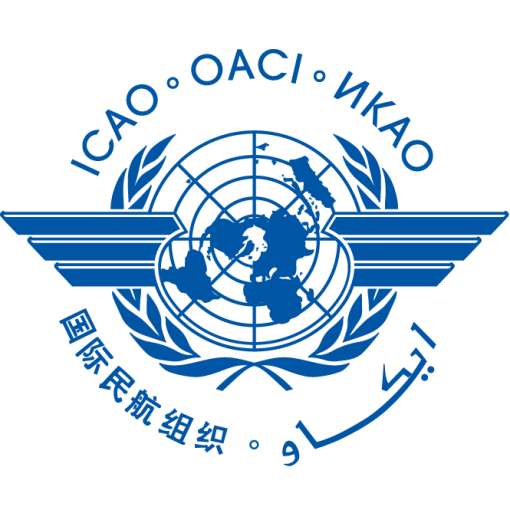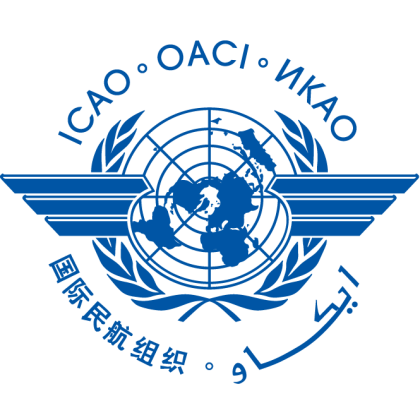








LRATFM could have a far-reaching trans-regional impact. To make a significant advance in this regard, it needs standard terms and definitions and an overview and general requirements for the application of the procedure. Data, information and analysis requirements also need to be discussed as does performance monitoring.
For the ICAO ANC, CANSO was also a co-signatory on six other whitepapers, on issues of sustainability, flight efficiency and safety:
Strengthen the Global Runway Safety Collaborative Framework through ICAO and Industry Partnership
Hyperconnected ATM
Connected Aircraft Concept
Towards Harmonised Realization of the ICAO Global Trajectory-Based Operations (TBO) Concept in the Asia Pacific Region
Industry Considerations of Contrail Management Solutions
Industry Contribution to the ICAO Long-Term Aspirational Goal.
CANSO also submitted an information paper on long-range air traffic flow management (LRATFM). The paper builds on CANSO’s 2022 whitepaper on the subject and calls for ICAO to consider developing standard definition and associated provisions to ensure a globally aligned and harmonised implementation of LRATFM.
ATFM’s focus is on managing local or regional air traffic, which means long-haul trans-regional air traffic is excluded. The paper notes that this presents three challenges:
ineffective or unfair allocation of delays especially in areas with a large portion of long-haul traffic
reduced predictability for long-haul traffic as they are subjected to last-minute tactical air traffic control instructions
increased airspace complexity as long-haul traffic is merged with short and medium-haul traffic.
Improving ATFM
Cross-border success
The second whitepaper explores Enhancing Seamless Air Traffic Management by Establishing a Framework for Cross-Border Services.
Finding new operational efficiencies are essential to ensuring a sustainable future. The paper notes that services are already being provided across State borders and notes that another CANSO whitepaper, Lines in the Sky, has detailed 13 examples of successful cross border arrangements (see article).
Cross-border arrangements can be complex to establish, however, as there are legal, economic, governance, oversight and sovereignty aspects. Nevertheless, there are ways to address these issues.
The paper concludes that “existing arrangements contain important lessons learned to teach States willing to examine potential benefits. ICAO support for implementation in the form of guidance, frameworks and template agreements will help States looking to consider changes to airspace to provide important operational benefits.”
This Air Navigation Conference provided an opportunity for detailed technical discussions on topics of air navigation and safety. Given the dominant nature of aviation’s environmental challenges, the Conference concentrated on the intentional refocusing of effort so that priority can be given to existing or new technical activities that best support the achievement of the long-term aspirational goal for international aviation (LTAG) of net zero carbon emissions by 2050. There are also other priority focus areas where ICAO is essential to secure an aviation system that continues to be safe and efficient, with improved resilience.
CANSO presented two whitepapers at the International Civil Aviation Organization’s Air Navigation Conference (ICAO ANC).
The first, Moving Beyond Compliance Measurement, explored the need to evolve safety performance measurement towards the proactive management of risks rather than simple compliance with ICAO standards. Air navigation services providers (ANSPs) have typically managed risks by measuring deviations against the standards. Ever-improving safety levels, and the scarcity of serious safety events has limited retrospective learning, however.
The CANSO whitepaper focuses on separation standards and proposes complementing current compliance-based metrics with a new methodology that continuously evaluates the dynamic interactions between aircraft pairs and any vulnerabilities in the system.
“The use of risk exposure metrics to depict the significance of interactions in the absence of any non-compliance event provides a more complete understanding,” suggests the paper. “Such insight can cause the organisation to ask questions regarding risk controls, potential unbalanced reliance on pilots complying to instructions in a situation where a collision scenario can quickly evolve should they not comply, or whether situational awareness and alerting systems and the design of procedures are effectively aiding controllers.”
The ICAO Air Navigation Conference took place 26 August to 6 September 2024. An important event in the aviation calendar, Air Navigation Conferences take place on an ad hoc basis, with the last in 2018.





LRATFM could have a far-reaching trans-regional impact. To make a significant advance in this regard, it needs standard terms and definitions and an overview and general requirements for the application of the procedure. Data, information and analysis requirements also need to be discussed as does performance monitoring.
For the ICAO ANC, CANSO was also a co-signatory on six other whitepapers, on issues of sustainability, flight efficiency and safety:
Strengthen the Global Runway Safety Collaborative Framework through ICAO and Industry Partnership
Hyperconnected ATM
Connected Aircraft Concept
Towards Harmonised Realization of the ICAO Global Trajectory-Based Operations (TBO) Concept in the Asia Pacific Region
Industry Considerations of Contrail Management Solutions
Industry Contribution to the ICAO Long-Term Aspirational Goal.
CANSO also submitted an information paper on long-range air traffic flow management (LRATFM). The paper builds on CANSO’s 2022 whitepaper on the subject and calls for ICAO to consider developing standard definition and associated provisions to ensure a globally aligned and harmonised implementation of LRATFM.
ATFM’s focus is on managing local or regional air traffic, which means long-haul trans-regional air traffic is excluded. The paper notes that this presents three challenges:
ineffective or unfair allocation of delays especially in areas with a large portion of long-haul traffic
reduced predictability for long-haul traffic as they are subjected to last-minute tactical air traffic control instructions
increased airspace complexity as long-haul traffic is merged with short and medium-haul traffic.
Improving ATFM

Advertisement

The second whitepaper explores Enhancing Seamless Air Traffic Management by Establishing a Framework for Cross-Border Services.
Finding new operational efficiencies are essential to ensuring a sustainable future. The paper notes that services are already being provided across State borders and notes that another CANSO whitepaper, Lines in the Sky, has detailed 13 examples of successful cross border arrangements (see article).
Cross-border arrangements can be complex to establish, however, as there are legal, economic, governance, oversight and sovereignty aspects. Nevertheless, there are ways to address these issues.
The paper concludes that “existing arrangements contain important lessons learned to teach States willing to examine potential benefits. ICAO support for implementation in the form of guidance, frameworks and template agreements will help States looking to consider changes to airspace to provide important operational benefits.”
Cross-border success

This Air Navigation Conference provided an opportunity for detailed technical discussions on topics of air navigation and safety. Given the dominant nature of aviation’s environmental challenges, the Conference concentrated on the intentional refocusing of effort so that priority can be given to existing or new technical activities that best support the achievement of the long-term aspirational goal for international aviation (LTAG) of net zero carbon emissions by 2050. There are also other priority focus areas where ICAO is essential to secure an aviation system that continues to be safe and efficient, with improved resilience.
CANSO presented two whitepapers at the International Civil Aviation Organization’s Air Navigation Conference (ICAO ANC).
The first, Moving Beyond Compliance Measurement, explored the need to evolve safety performance measurement towards the proactive management of risks rather than simple compliance with ICAO standards. Air navigation services providers (ANSPs) have typically managed risks by measuring deviations against the standards. Ever-improving safety levels, and the scarcity of serious safety events has limited retrospective learning, however.
The CANSO whitepaper focuses on separation standards and proposes complementing current compliance-based metrics with a new methodology that continuously evaluates the dynamic interactions between aircraft pairs and any vulnerabilities in the system.
“The use of risk exposure metrics to depict the significance of interactions in the absence of any non-compliance event provides a more complete understanding,” suggests the paper. “Such insight can cause the organisation to ask questions regarding risk controls, potential unbalanced reliance on pilots complying to instructions in a situation where a collision scenario can quickly evolve should they not comply, or whether situational awareness and alerting systems and the design of procedures are effectively aiding controllers.”
The ICAO Air Navigation Conference took place 26 August to 6 September 2024. An important event in the aviation calendar, Air Navigation Conferences take place on an ad hoc basis, with the last in 2018.

